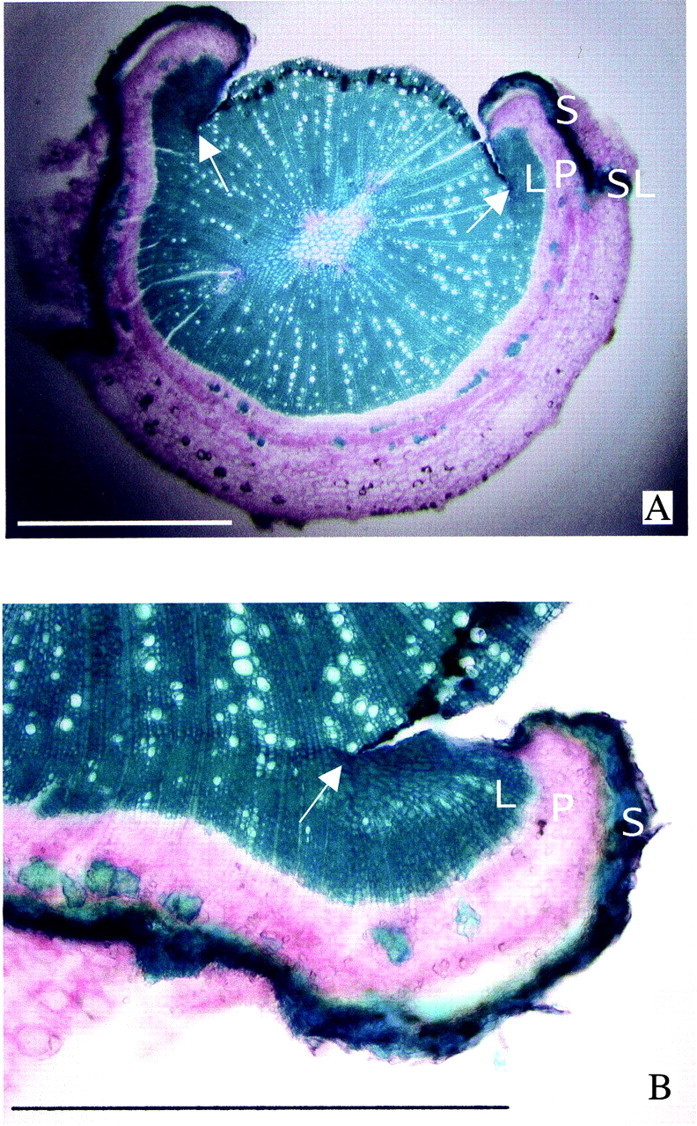
Fig. 8. Transverse section of pedicels taken on 2 October, 153 DAA and 59 d after partial girdling. A, Ringed pedicel showing the proliferation of calli from the innermost part of the cut edge of the bark. Calli consist on an inner lignified region (L), covered by parenchyma (P) protected by suberized cells (S). The calli are not fused with the secondary xylem (arrows). The absence of vessels in the lignified regions of the calli contrasts with their presence in the outermost layers of secondary xylem, which formed at about the same time as the calli. The cut edges of the bark are protected by a suberized layer (SL). B, Enlarged view of a lignified callus showing linear rows of cells converging in the innermost part of the cut edge (arrow), were the callus originated, and the absence of vessels. In the late‐formed secondary xylem, vessels are present. The rows of cells are continuous with those from the early‐formed xylem.
